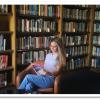
Reihaneh Bandari writes about how a collaborative team from Deakin University, Monash University, and local community members tackled water resource decline and agricultural challenges in the Goulburn-Murray region of Australia using co-production principles to set the stage for lasting dialogue and local solutions.
By Reihaneh Bandari, participant in the 2023 IIASA Young Scientists Summer Program (YSSP) and PhD student at Deakin University, Australia
Goulburn Murray region, Victoria, Australia
The Goulburn-Murray region in northern Victoria is recognised as Australia's food bowl. Within this region lies Australia's largest expanse of irrigated land, offering substantial employment prospects by creating over 10 000 jobs and contributing to a remarkable annual agricultural production value exceeding $AUD 6 billion. However, over the last two decades, the region has undergone significant changes, with a concerning net decline of nearly 50% in its water resources. This decline poses a substantial challenge to the region's sustainability, particularly for the agricultural sector. An example of an impacts already experienced in the sector is a one-third reduction in regional milk production since 2000. The reduction in these agricultural outputs poses challenges to the region's economic growth and its ability to meet both local and international demands for food products.
Murray River, Victoria, Australia
In response to these pressing issues, the Local SDGs team, led by Deakin University, in collaboration with Monash University, the North Central Catchment Management Authority, and a group of local community members in Australia, conducted in-depth research to find sustainable solutions by applying co-production principles. Engaging regional stakeholders, the team sought to tap into their experience, ideas, and local knowledge.
Overcoming challenges: collaborating with local stakeholders amid adversity
Our journey to collaborate with the local community faced some challenges along the way. The COVID-19 pandemic and ensuing lockdowns restricted travel, making it impossible for us to visit regional Victoria and directly engage with the appropriate stakeholders for our case study. Despite these obstacles, from July 2021 to December 2021, we tirelessly sought consultations with various communities to establish effective communication channels and secure workshop venues in their respective regions. Regrettably, after giving their initial approval, the participants of two case studies decided not to proceed with the collaboration. This decision was primarily driven by concerns about stakeholder fatigue resulting from their extensive involvement in other participatory processes within the Goulburn Murray area.
Finally, our collaboration took root with the Goulburn Murray Resilience Taskforce subcommittee. This Taskforce comprises community and regional leaders with a profound understanding of the region's sustainability challenges and opportunities committed to promoting regional resilience. Their unique expertise, dedication, regional focus, and collaborative spirit made them the ideal group to lead engagement activities in the area. Following the relaxation of lockdown measures in Victoria, we conducted our first face-to-face workshop on 30 March 2022, followed by a second workshop on 15 July 2022.
Bridging the gap between researchers and stakeholders
We encountered a gap between us (the researchers) and the local stakeholders during our engagement. This divide stemmed from differing perspectives, priorities, and access to information. While the stakeholders had valuable on-the-ground knowledge and experience, we focused on long-term environmental, social, and economic factors, utilising complex scientific methods. We aimed to bridge this gap by promoting dialogue, mutual understanding, and co-creation of knowledge, with the support of the RM consultancy group (RMCG), who are proficient in regional issues and communication between stakeholders and scientists. This strategy facilitated effective communication, collaboration, and the integration of scientific expertise with on-the-ground experience.
In our quest for local sustainability, we embraced a participatory approach by involving stakeholders from the project's inception. Working hand in hand, we identified the key challenges, created a model tailored to our community, and developed solutions that fit the region's unique needs.
This initiative marked the beginning of an ongoing dialogue and knowledge exchange platform between us and local stakeholders, fostering a foundation for local sustainability that benefits both the environment and the communities within the region.
I extend my sincerest appreciation and gratitude to Langit Rinesti, Monika Bauer, and Ansa Heyl for their collaboration and contributions to the creation of this blog.
Note: This article gives the views of the authors, and not the position of the IIASA blog, nor of the International Institute for Applied Systems Analysis.


